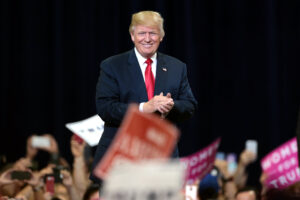
Federal Reserve Signals Patience on Interest Rate Cuts Amid Inflation Concerns
In a recent statement that has rippled through financial markets, Federal Reserve Governor Christopher Waller has indicated that there is no immediate need to adjust interest rates, despite the latest inflation data not meeting expectations. This announcement comes at a critical juncture for the US economy, as it grapples with the dual challenges of sustaining growth and curbing inflation.
Waller’s comments reflect a broader sentiment within the Federal Reserve that any changes to the current interest rate policy should be approached with caution. The central bank’s decision-making has been influenced by a series of economic indicators that suggest a more complex picture than previously thought.
The Federal Reserve posted a record loss of $114.3 billion in 2023, a stark reminder of the volatile economic environment and the impact of higher interest rates on the central bank’s finances. This loss underscores the delicate balance the Fed must maintain as it navigates between supporting economic activity and ensuring long-term financial stability.
Recent inflation figures have been described as ‘disappointing’ by Waller, who emphasized the need for a sustained period of better data before considering a rate cut. The Fed’s cautious stance is supported by a strong economy and robust hiring, factors that provide some leeway in the timing of any policy adjustments.
The Federal Reserve has kept interest rates at a more than two-decade high since July, with officials debating the timing and extent of potential reductions in borrowing costs. Fed Chair Jerome Powell has highlighted the consequential nature of such decisions and the importance of patience.
Investors have been closely monitoring the Fed’s communications, with many betting on a rate cut as early as June. However, Waller’s remarks suggest that the central bank may hold rates at their current restrictive level for longer than previously anticipated, to help steer inflation towards the 2% target.
The debate within the Fed is set against a backdrop of global economic uncertainty, with other central banks also grappling with similar issues. The European Central Bank and the Bank of England, for instance, are facing their own challenges with inflation and growth, making international coordination more complex.
As the Federal Reserve continues to assess the economic landscape, Waller’s use of the phrase ‘no rush’ signals a deliberate and measured approach to monetary policy. This stance is likely to influence investor expectations and market dynamics in the coming months.
The Federal Reserve’s next moves will be closely watched by policymakers and market participants alike, as they seek to understand the implications for the US and global economies. With inflation remaining a persistent concern, the Fed’s cautious approach may well set the tone for monetary policy in the foreseeable future.

